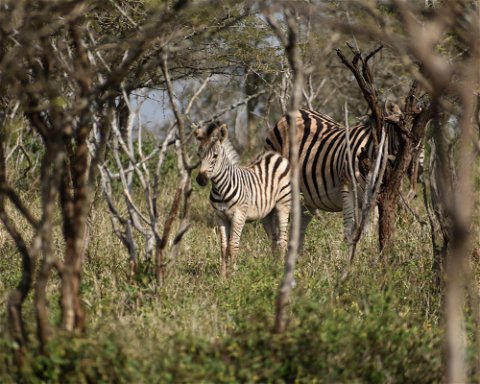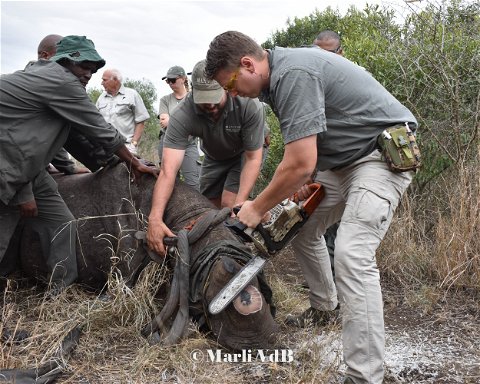Manyoni Private Game Reserve
Manyoni Private Game Reserve lies in the heart of Zululand, an area that is world renowned for its spectacular game viewing, rich cultural traditions, and conservation history. Initially formed as part of the WWF black rhino range expansion project, Manyoni has become one of the premier big five safari destinations in Kwa-Zulu Natal with a strong focus on endangered species conservation. Conveniently located only 3 hours from Durban and 6 hours from Johannesburg, Manyoni is home to a range of luxury safari lodges, and boasts 23,000 hectares of magnificent Zululand scenery.
Manyoni Private Game Reserve is one of the largest privately-owned reserves in Kwazulu-Natal. This 23,000-hectare reserve is the product of 17 dedicated landowners who dropped their fences in 2004 to create one contiguous protected area for our wildlife. The selection of the area as a potential release site for the WWF Black Rhino Range Expansion Project was a major driving factor in the establishment of Manyoni. In 2005, the newly established reserve was confirmed as a release site by the WWF and a founder population of black rhino were released into their new home.
A few years later, in 2009, the reserve was formally proclaimed by the government as a Nature Reserve under the Protected Areas Act. Since the establishment of the reserve we have seen the reintroduction of lions, making Manyoni a Big 5 Reserve, and the reintroduction of endangered cheetahs and African wild dogs. In addition to endangered species conservation, Manyoni Private Game Reserve has a strong focus on conserving biodiversity, this includes the landscapes, ecosystems and processes upon which this biodiversity depends.
History
The Msunduze Valley has always been suitable for wildlife and traditional Zulu (Nguni) cattle. It was a seasonal grazing area and traditional hunting area of the Zulu clans that lived away from the valley. Cetshwayo kaMpande was the son of kaMpande who was Shaka Zulu’s half brother. Cetshwayo succeeded his father Dingaan and was crowned as the Zulu King in 1873. During the same year Maphitha Zulu the leader of the Mandlakazi section died and was succeeded by his son Zibhebhu kaMaphitha. After Cetshwayo’s capital Ulundi was captured and torched he was exiled to London. Disorder broke out and, in an attempt to resolve this, Zululand was divided into 13 districts in 1879 by the British. Zibhebhu was appointed as one of the 13 independent chiefs’ and was allocated the Mandlakazi district. His kraal was not far from the boundaries of the current Manyoni Private Game Reserve, further upstream on the Msunduzi River.
All the Zulu people north of the Umhlatuzi River were again placed under Cetshwayo after his restoration in 1883, apart from the Mandlakazi section which remained under Zibhebhu’s authority. Almost immediately tribal wars broke out between the Mandlakazi tribe and Cetshwayo followers. Zibhebhu’s army burnt Cetshwayo's kraal in Ulundi on 21st July in 1883 and was responsible for Cetshwayo's flight, which later ended in his death on the 8th February 1884. Dinizulu, the son of Cetshwayo, was left to fight for the succession and with the help of General Louis Botha defeated Zibhebhu and his army at the Battle of Ghost Mountain. The Boers acquired cattle and a large portion of the fertile land in the Zululand and the Usutu refuted this. The British Government interfered and the land acquired by the Boers was confirmed. The remainder of Zululand was annexed by the British in 1884.
Tribal lands were officially demarcated by Zululand’s Delimitation Commission in 1902. Zibhebhu, Chief of the Mandlakazi tribe died on the 27th August 1904. His successor Bokwe Zulu was only 2 years old when he died and so his brother Mciteki Zulu was appointed as the acting chief. Bokwe Zulu was appointed Chief on the 1st January 1920 until he became seriously ill in 1939. Between 1939 and 1947 there were several acting Chiefs of the Mandlakazi Tribe. In 1947 they requested that acting Chief Mbangomuni Nxumalo be deposed and that the area be divided into 4 sections, each under the authority of a headman. On the 12th of October 1949 Pumanyana Zulu Bokwe was officially appointed as the Chief of the Mandlakazi tribe. The Government notice 1235 in August 1957 stipulated the approval of the tribal area and the official tribal authority as "The Mandlakazi Tribal Authority". Pumanyana Zulu's successor Eugene Bhekintinta Zulu became of age and was appointed by the Zulu Government as Chief of the Mandlakazi tribe as it is still today.
The earliest farms in the area that were granted to farmers were in 1942. The Minister of lands advertised that certain landholdings in the Nongoma district can be leased for a period of 5 years with the option of acquiring the land during the currency of the lease or at the expiration thereof. This area became known as the Mkuzi settlement without any official proclamation. The 1984 floods in Northern Zululand resulted in very bad harvest for that year and the next. As a result, the department bought livestock, sunk boreholes, and erected windmills for the farmers along with issuing a large amount of grants for farmers. Crops such as cotton were farmed extensively in the area and later, with the extirpation of tsetse flies, cattle farming became more lucrative. With the expansion of the tourism industry many cattle farms converted to game farming and ultimately led to the amalgamation of these farms, culminating in the Manyoni Private Game Reserve of today.







Share This Page